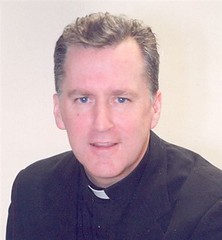St. Leo’s family was from Tuscany, but he was born in Rome in the year 440 AD. He was a deacon under St. Pope Celestine I and later Pope Sixtus III. St. Leo was sent to make peace between two disputing Roman generals, Aetius and Albinus, when their feud threatened to leave Gaul vulnerable to invasion by barbarians.
He was still in Gaul when he was sent word that he had been elected the Successor of St. Peter. He immediately showed extraordinary skill as a pastor and preacher. Ninety-six of his sermons are still in existence. In his sermons he explained Christian doctrine, especially the Incarnation. He also stressed almsgiving and other social aspects of Christian life. He also dealt with the heresies of Manicheanism, Pelagianism, Nestorianism, Priscillianism which was becoming a problem in Spain and Monophysitism, the heresy of Eutyches.
143 letters written by him and 30 letters written to him are also still in existence. In them we see him quashing the proceedings of St. Hilary, the Bishop of Arles in Gaul who was exceeding his authority. In one letter he confirms the authority of Anastasius, Bishop of Thessalonica over the bishops of Illycrium. On another occasion he asks him to be more tactful and considerate. On another he reminds him that bishops have a right to appeal to Rome, ”according to ancient tradition”. In another letter he forbade the appointment of laymen as bishops, or any man who had been married twice or married a widow.
St. Flavian, the Patriarch of Constantinople, excommunicated Eutyches an abbot of Constantinople. Eutyches appealed to St. Leo the Great. St. Leo wrote to St. Flavian explaining that Eutyches had fallen into error. In attempt to avoid the heresy Nestorius, Eutyches denied the two natures in Christ. Christ is a Divine person with a human and divine nature. Eutyches denied that Christ shared our human nature.
A council was now called by Emperor Theodosius supposedly to look into the matter, but it was packed with friends of Eutyches including Dioscorus, the Patriarch of Alexandria. At the council St. Flavian was condemned and beaten so badly that he later died of his injuries. The council was nicknamed “The Robber Synod”. The Popes legates were not allowed to read St. Leo’s letter. As soon as the proceedings became known to the Pope, he declared the synod null and void. In a letter to Emperor Theodosius he wrote “Leave the bishops the liberty of defending the faith: no worldly power or terrors will ever succeed in destroying it. Protect the Church and seek to preserve its peace that Christ in His turn may protect your empire.”
Two years later a general council was held at Chalcedon in which St. Flavian was vindicated and Dioscorus was declared, excommunicated and deposed. On June 13, 449 St. Leo had written St. Flavian a letter which became famous as “The Dogmatic Letter” or the “”Tome of St. Leo”. When the letter was read at the Council of Chalcedon, it contained such a clear explanation of the Divine and human nature of Christ that the Bishops exclaimed “Peter has spoken by Leo!”
Pope Leo the Great won the great respect of all when he turned Attila the Hun away from the city of Rome. In the year 452 Attila invaded Italy. He savaged the cities of Aquileia, Milan and Pavia. When he turned toward Rome the population of the city was in panic. The Empoeror Valentinian III and the Senate ordered him to negotiate the enemy. At once he set out to meet Attila with Avienus the consul and Trigetius the governor of Rome. The Pope spoke with Attila and convinced him to take an annual tribute rather than entering the city. Rome was safe for the moment, but it wouldn’t last for long. Three years late Genseric the Vandal appeared before the walls of Rome which was practically defenseless. This time St. Leo was not as successful. He was however able to restrain Genseric from slaughter and burning the city and to be satisfied simply with pillaging it. After fifteen days the Vandals left Rome. They took an immense booty and prisoners back to Africa.
St. Leo immediately set about repairing the damage done by the Vandals. He tried to replace the vessels and ornaments of the plundered churches and had alms sent to assist the captives in Africa. Only two other Popes have been given the title “the Great”, they are St. Gregory the Great (d. 604) and St. Nicholas I the Great (d. 867).
St. Leo the Great died on November 10, 461. He is buried at St. Peter’s Basilica. He was declared a Doctor of the Church in 1754. St. Leo had a very even temperament and remained calm even in the most difficult moments. He served as Pope for twenty-one years. During this time he won the respect of all, the rich and the poor, Roman and barbarian, emperors, laymen and clergy.
His Anglican biographer, Dr. Jalland, summed up his character by extolling “his indomitable energy, his magnanimity, his consistency and his simple devotion to duty.”
The information above comes mostly from Butler’s Lives of the Saints.
For more information on St. Leo the Great see the following:
http://www.biography.ms/Pope_Leo_I.html
http://www.newadvent.org/cathen/09154b.htm
http://www.catholicism.org/pages/leo.htm
http://www.ewtn.com/library/MARY/LEO.htm
http://www.victorclaveau.com/htm_html/Doctors%20of%20the%20Church/saint_leo_the_great.htm
Letters of Pope Leo the Great:
http://web.globalserve.net/~bumblebee/ecclesia/leo.htm
http://ic.net/~erasmus/RAZ235.HTM
The Tome of St. Leo: http://www.ccel.org/fathers2/NPNF2-14/Npnf2-14-94.htm
A fresco by Raphael of St. Leo’s encounter with Attila the Hun: http://www.wga.hu/frames-e.html?/html/r/raphael/4stanze/2eliodor/4meetin.html
Eutyches: http://www.newadvent.org/cathen/05631a.htm
---end---
Tuesday, November 08, 2005
Subscribe to:
Post Comments (Atom)

No comments:
Post a Comment